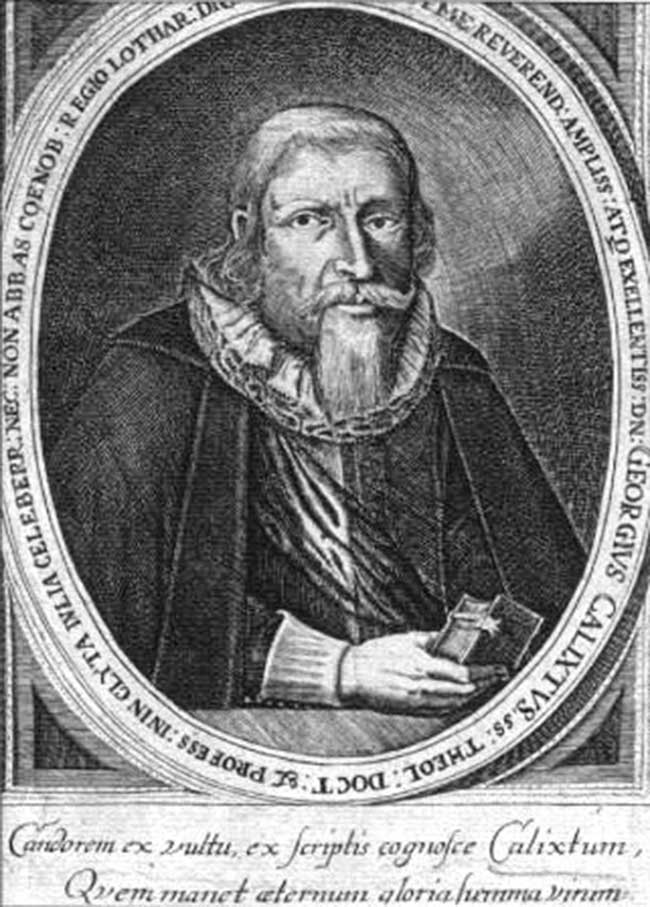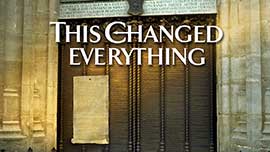DIVIDED CHRISTIANS DISAGREED AT THORN

[Above: Georg Calixtus, the colloquy's best-known participant—public domain, Wikimedia]
POLAND IN 1645 was religiously divided. The principal Christian denominations included Catholics, Lutherans, Reformed, and Moravians. For the sake of his country, King Wladislaw IV desired to heal the divisions. The Thirty Years’ War still raged across Europe and passions and tensions ran high. He called a conference of the principle parties at Thorn, a Lutheran city under Polish protection.
The “Colloquium charitativum” in Thorn opened on this day, 28 August 1645. Twenty-six Catholic, fifteen Lutheran, and twenty-four Calvinist theologians were present at the first meeting. The Moravian bishop Amos Comenius came with the Calvinist delegation. Additional Lutherans arrived later. Among the Catholics were eight Jesuits.
For any ecumenical conference to succeed, its representatives must be willing to make accommodation with each other. However, the Catholics came determined to squash the attempt at peace and to prevent any concessions to the Protestants. Poland was operating under the Pax Dissidentium of 1573, an agreement that gave Protestants and Catholics equal civil rights, but Rome had denounced this as a league of Christ with Belial, and the Jesuits had been working to undermine it.
With one party to the negotiations unwilling to even grant the other’s right to exist, any attempt to work out theological differences was guaranteed to fail. The Catholics presented their position first and it was read in a public session. The Reformed then read their statement, but because its title included the word “catholic” the Roman Catholics protested and the paper was not allowed into the official record. The Catholics refused the Lutheran confession a public reading.
When the Catholic party suppressed the Lutheran document, the king’s representative, the Duke of Ossolin, asked to be recalled. Count Johann Lesczinski took his place.
Although the Protestants agreed that the Consensus of Sendomir (the Polish agreement between Lutherans, Calvinists, and Moravians) was Scriptural, they divided on other matters. The Lutherans disagreed among themselves and the Reformed and Lutherans with each other. Consequently, although the conference ran for several months, it produced no unity. Georg Calixtus was a Lutheran theologian who had hoped great things of the conference. Rejected even by the Lutherans because he was considered too willing to make doctrinal concessions, he remarked ruefully, “The Colloquy was no colloquy at all, certainly no colloquium caritativum [charitable colloquy], but irritativum [irritative].”
Thorn has been described as the most important effort to attain religious unity during the Thirty Years’ War. However, its speeches often turned into attacks and recriminations and all the parties left more entrenched in their differences than when they came together. Perhaps the only lasting benefit that came out of the gathering (from a Reformed perspective) was the Calvinist “Declaration of Thorn,” written during the conference, which became a creedal standard for the Calvinist churches of Brandenburg. It stressed continuity with the ancient church.
The results might have been better if, instead of trying to unify entire systems, the representatives had worked on isolated theological topics. Or perhaps the king could have issued an order for them to work out a method of coexistence apart from any agreement on doctrine.
—Dan Graves
----- ----- -----
The story of the tumultuous Reformation era is told in This Changed Everything. Watch it at RedeemTV.
This Changed Everything can be purchased at Vision Video.







